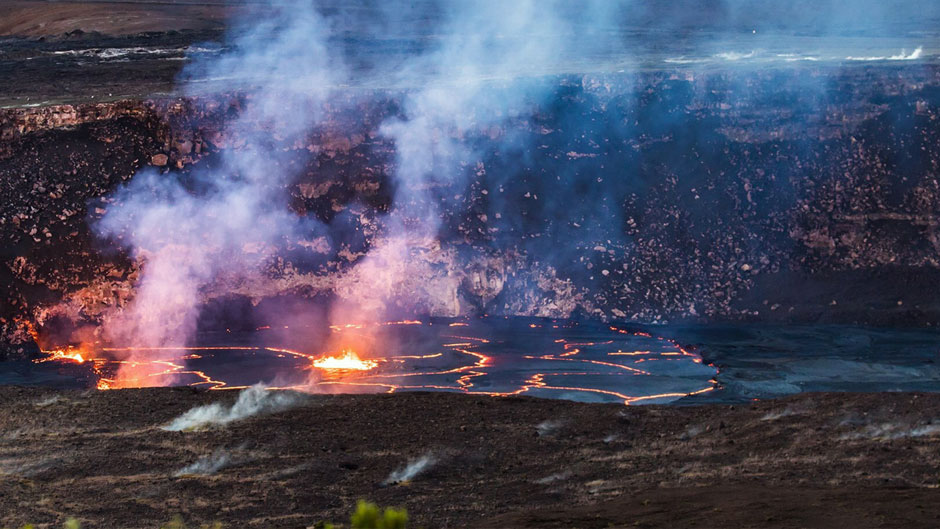Mount Kilauea, an active shield volcano located in Volcanoes National Park on Hawaii’s Big Island that rises 4,091 feet above sea level, has been erupting continuously since 1983. The most recent activity began May 3 when the volcano erupted following a powerful earthquake, exposing several new lava vents that threatened surrounding neighborhoods, LiveScience reports.
UM News asked University of Miami volcano expert Falk Amelung, professor of marine geology and geophysics at the Rosenstiel School of Marine and Atmospheric Science, to explain the current activity on Kilauea.
UM News: Can you provide some background on Kilauea, its history and the current activity occurring on Hawaii?
Falk Amelung: The Hawaiian hot spot has been producing lava for at least 80 million years.
Kilauea is one of five volcanoes that make up the Big Island of Hawaii. Kohala, the oldest volcano on the island, is extinct, and Mauna Kea is dormant. Kilauea, Mauna Loa and Hualalai are still active. The new volcanic activity on Kilauea began on May 3, 2018 after a 6.9 magnitude earthquake struck the area.
UM News: From a geoscientific perspective, what is the significance of these eruptions?
Amelung: This eruption is a major change of Kilauea’s activity and likely indicates the beginning of a new and different eruptive phase. The previous phase started in 1983 and was essentially a continuous eruption from the same location.
UM News: In 2014, you co-authored a study that found a magma reservoir beneath Kilauea. How could that reservoir be influencing this current eruption?
Amelung: It is possible that some of the currently erupting lava is coming out of this reservoir, but we don’t have any evidence in favor or against this hypothesis. Current ground deformation data have to be carefully analyzed to see whether there is any subsidence over this reservoir, which could indicate a volume decrease.
It is also possible that this reservoir is currently cut off from the active processes. There is a major reservoir south of the caldera that has inflated by about 0.5 meters before the eruption and is now deflating.
UM News: To your best estimate, how much longer can we expect the eruption to last?
Amelung: Difficult to tell. My guess is that the current activity will continue at least until the lava lake level approaches the elevation of the eruption site. Then there will be less pressure pushing the magma out of the volcano. The eruption will then either continue at a lower rate or it may stop and the volcano would then re-pressurize. Prior to the current activity, the volcano was in near constant eruption for 35 years from a different location. The thing is that there is a continuous production of melt (for more than 80 million years!), which somehow has to come out of the volcano or grow the volcano internally.
The United States Geological Survey (USGS) has more information, and it is likely that they will come out with some scenarios for future events.
UM News: How dangerous is this volcanic activity for residents and tourists?
Amelung: The explosions could be dangerous near the summit, and there are toxic gases where the lava pours out. Therefore, most of Hawaii’s Volcanoes National Park is currently closed to tourists.
The USGS currently lists their alert level as a WARNING, code RED. As lava from Kilauea has now hit the Pacific Ocean, Hawaii County officials warn that a plume of “laze” – a hot, corrosive gas mixture of lava and haze – has formed. The plume is a mixture of hydrochloric acid, steam and fine glass particles. Ash plumes also continue to erupt from the summit, creating an ash fallout that can lead to health effects including respiratory, skin and eye irritation.
However, there are no indications for hazards at the west coast of the island, where most tourists visit.

